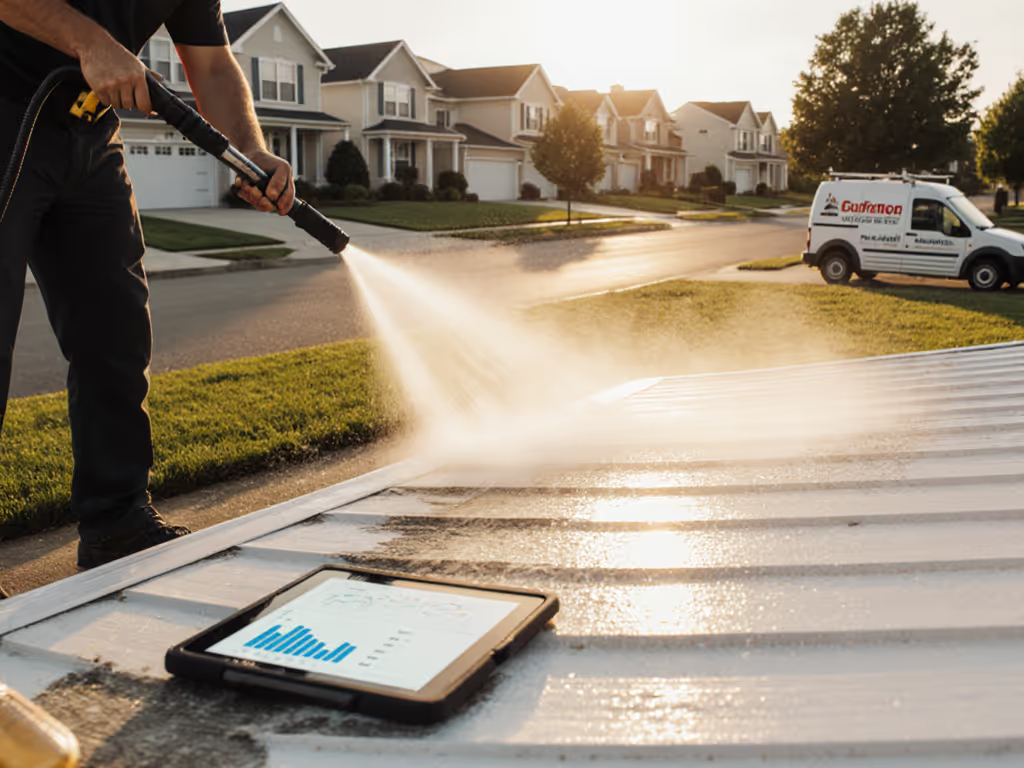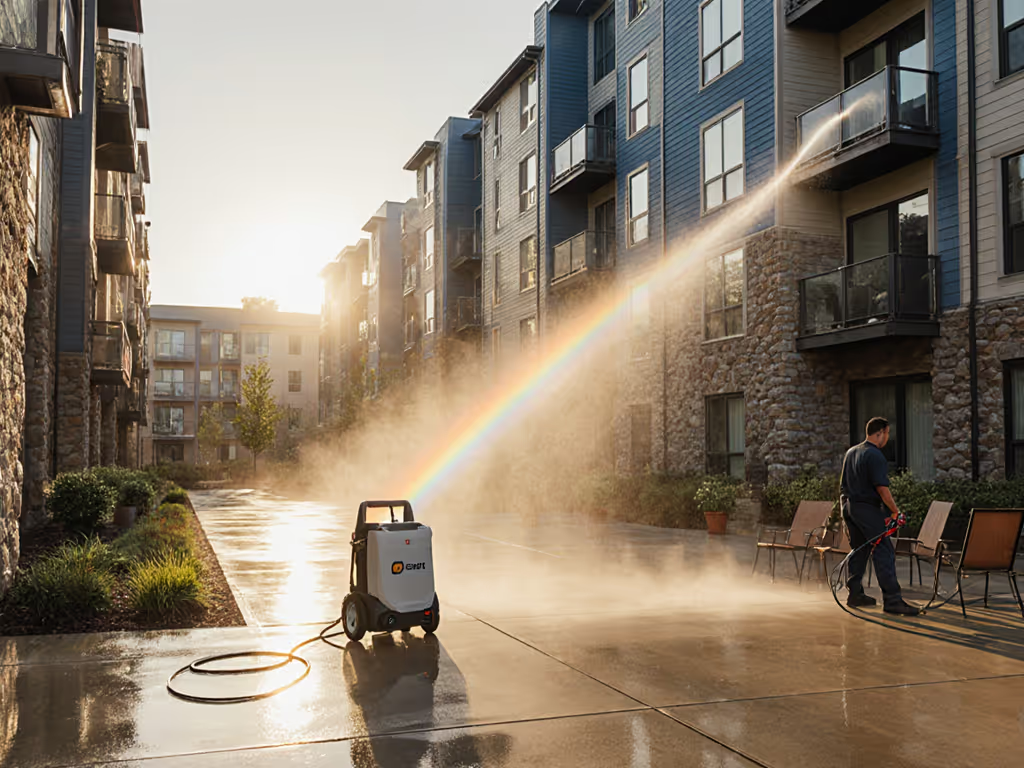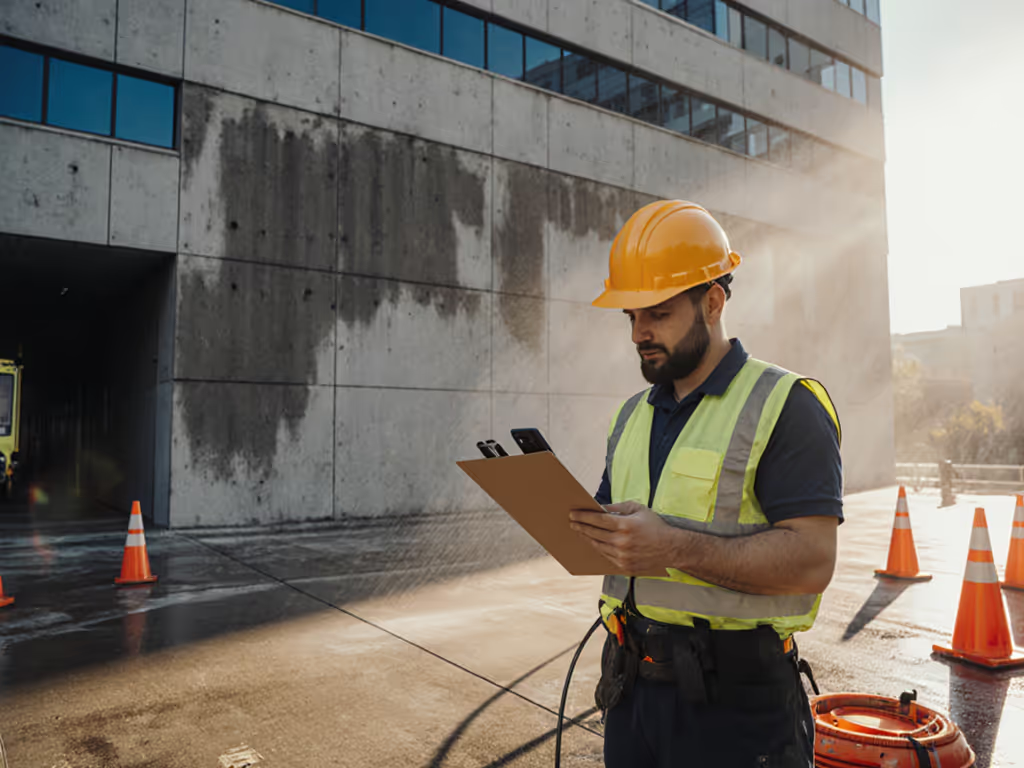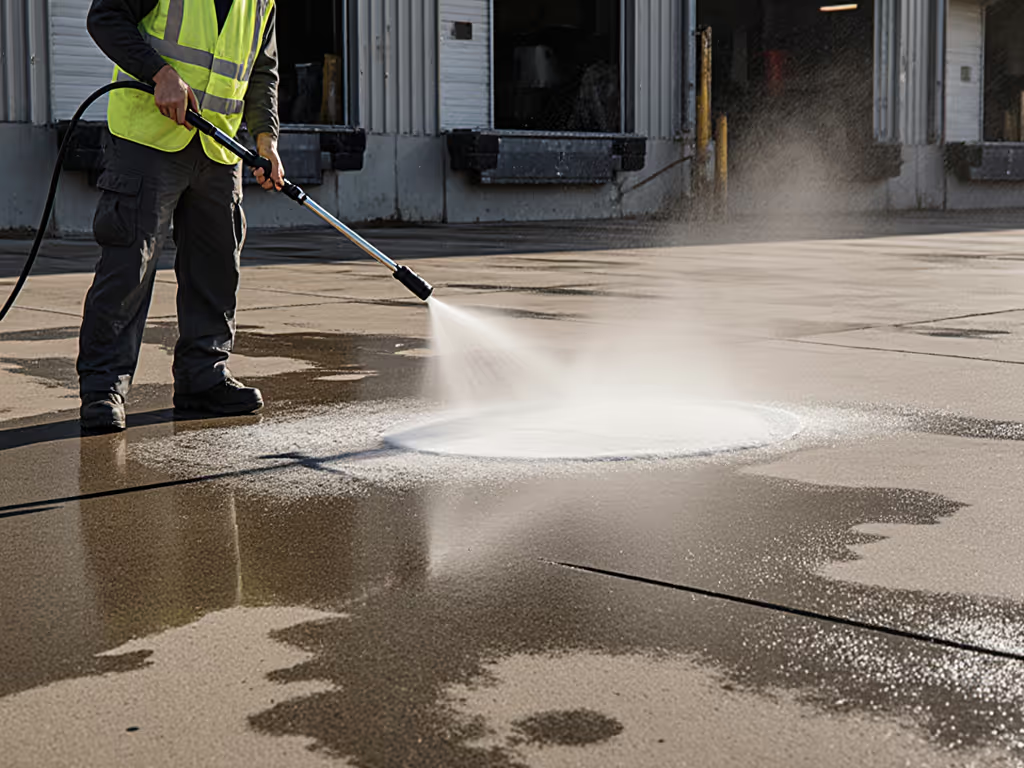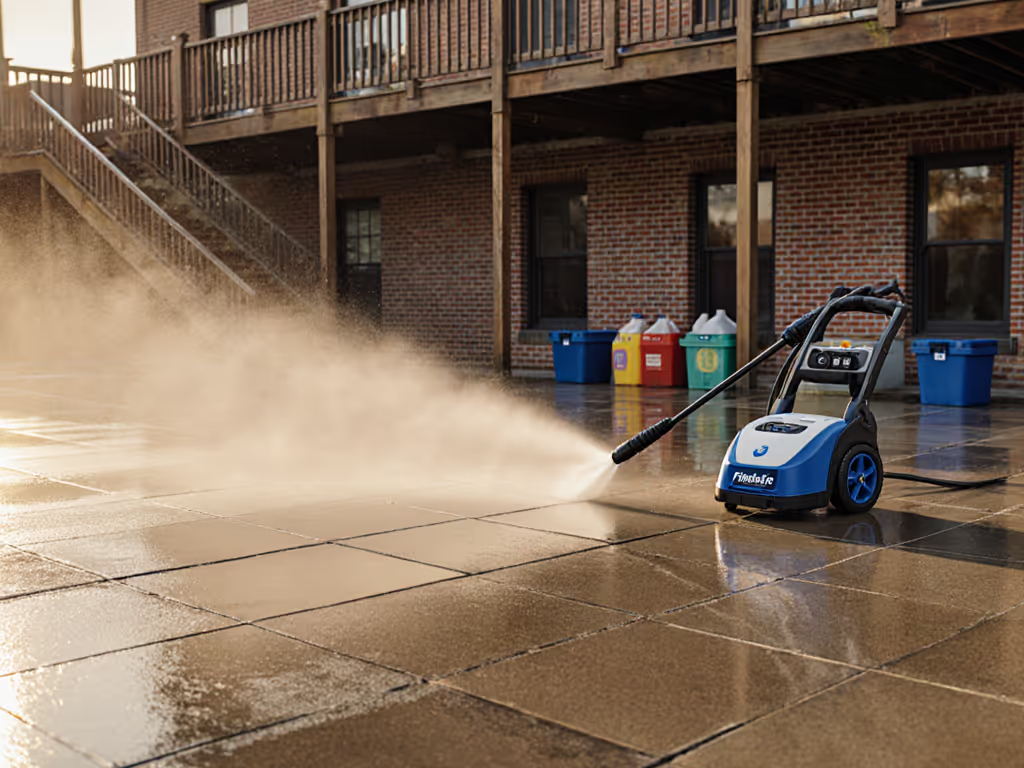
Graffiti Removal Pressure Washer: Surface-Safe Comparison
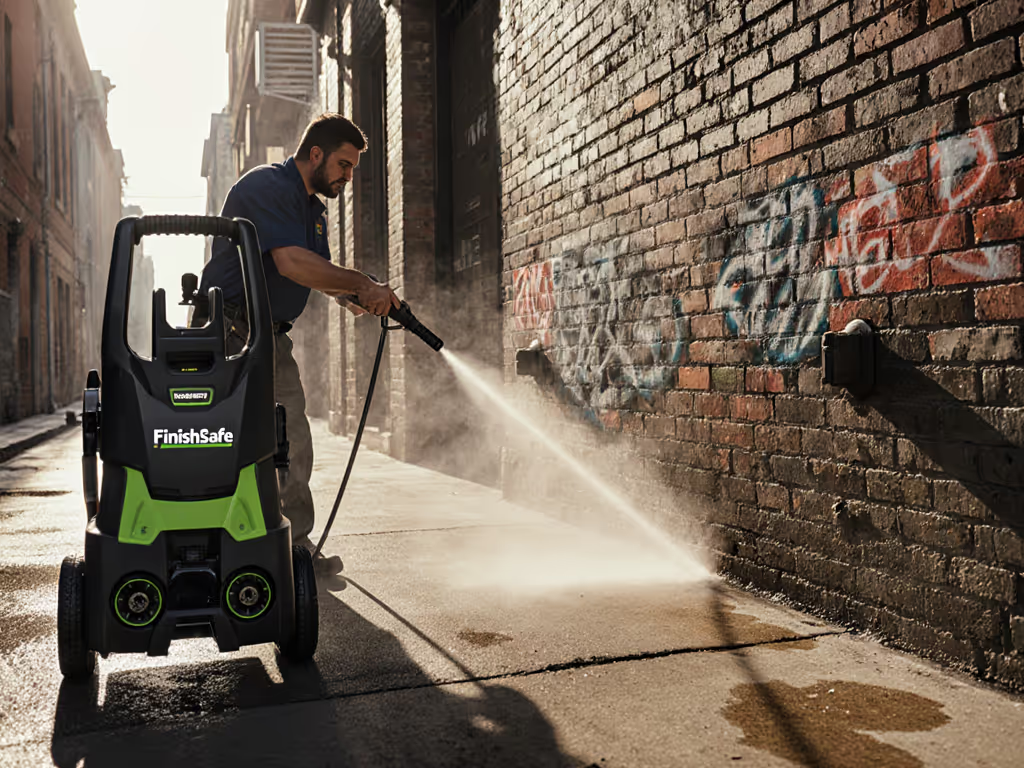
Removing graffiti requires precision equipment that cleans effectively without damaging underlying surfaces. Commercial graffiti cleaning equipment balances pressure output, flow rate, and chemical compatibility to eradicate vandalism while preserving substrates like brick, concrete, and wood. This analysis compares surface-safe approaches using verified performance data. If you're unsure how PSI and GPM interact for graffiti removal, see our PSI vs GPM guide.
Performance Metrics Comparison
| Feature | Concrete/Brick | Wood/Metal | Multi-Surface |
|---|---|---|---|
| Ideal PSI | 2000-3000 | 1200-1800 | 2000-2500 |
| GPM | 2.0-3.0 | 1.4-1.8 | 2.0-2.5 |
| Nozzle | 15°-25° | 40° | 25° + foam |
| Key Risk | Mortar erosion | Grain raising | Overspray damage |
Surface-Specific Protocols
- Brick/Concrete: Use 2500 PSI at 2.5 GPM with a 25° tip. Pre-treat with biodegradable remover (e.g., Krud Kutter GR32) [1][3][7]. Maintain 12" distance to prevent mortar damage.
- Wood/Metal: Limit to 1800 PSI. Apply non-caustic remover via foam cannon, dwell 10 minutes, then rinse with a 40° tip at 8" standoff [1][6].
- Painted Surfaces: Hot water (140°F+) outperforms cold by 100x energy transfer for shadow elimination [2]. For a deeper comparison of when heat matters, read our hot vs cold pressure washer guide.
Equipment Analysis
Gas vs. Electric Tradeoffs
NorthStar Gas Model (4200 PSI/3.5 GPM)

Northstar 4200 PSI 3.5 GPM Pressure Washer
- Best for: Large concrete areas
- Noise: 87 dB(A) at 25 ft (requires baffling)
- Flow match: Requires 3.0 orifice nozzle for graffiti work to avoid substrate damage [1][5]
Electric Units (e.g., Tender 3800 PSI)
- Lower noise (74 dB(A))
- Intelligent pressure adjustment screens
- Limited by 20A circuits and tankless water heating [1]
Krud Kutter GR32 Remover
- Non-toxic, water-based formula
- Effective on aerosol paints without solvent damage [3][7]
- Use with foam cannon for dwell control
Low-Impact Graffiti Removal Methodology
- Pre-Test: Apply remover to 1 sq ft; verify no discoloration at 10 minutes
- Chemical Application: Foam cannon coverage (4:1 water:remover ratio)
- Dwell Management: 5-10 minutes max (prevents etching)
- Rinse Technique: Fan tip ≥30° from surface; gradual pressure increase
- Post-Inspection: Check for shadow remnants; hot water rinse if needed [2][6]
Noise and Water Optimization
- Quiet Operation: Rubber isolators + fence baffling reduce dB(A) by 3-5 units Compare model noise levels in our quiet pressure washer dB rankings.
- Water Budgeting: Flow-matched orifices cut usage 22% without slowing cleaning speed
- Compliance: Electric units meet 75 dB(A) suburban ordinances; tank mods enable drought-region work
Optimize before oversizing: A 3000 PSI unit with <2.8 GPM flow often cleans faster than 4000 PSI mismatched systems [5].
Actionable Next Steps
- Inventory surfaces needing protection
- Calculate required GPM: (Square footage × 0.02) + 10% buffer
- Test Krud Kutter GR32 on an inconspicuous area
- Rent a 2500 PSI unit before purchasing
For pro results without collateral damage, match PSI/flow to surface fragility, prioritize hot water rinsing, and verify chemical safety through spot testing. Effective tag removal combines precision equipment with disciplined technique.

